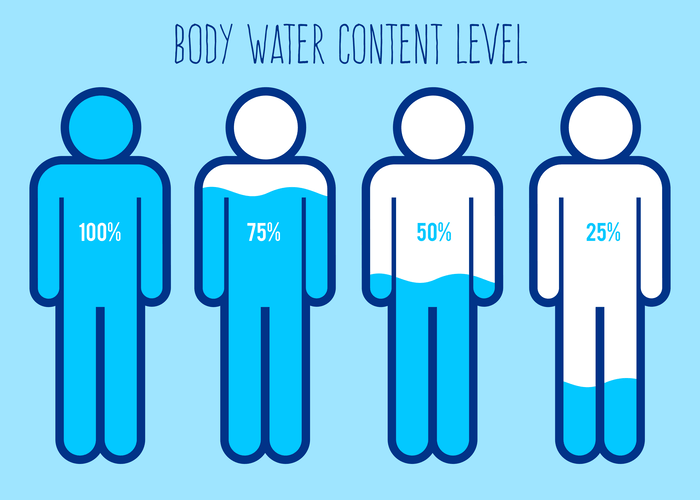Research shows that women who drink more alcohol than is recommended on a regular basis tend to develop liver disease, cardiomyopathy and nerve damage after fewer years than men who do the same. The pancreas helps regulate how your body uses insulin and responds to glucose. If your pancreas and liver don’t function properly due to pancreatitis or liver disease, you could experience low blood sugar, or hypoglycemia. People who binge drink or drink heavily may notice more health effects sooner, but alcohol also poses some risks for people who drink in moderation.
Body composition
When someone regularly abuses heavy amounts of alcohol for https://ecosoberhouse.com/ an extended period of time, it significantly reduces your immune system’s efficiency in dealing with viruses and infectious diseases. Another physical effect of alcoholism is the damage it causes to the immune system. Even just drinking an excess of alcohol in one sitting can impair your body’s ability to fight off bacteria. The federally supported work, published today in Science Advances, provides a new explanation of alcohol’s long-term effects on cognition. Korsakoff syndrome often appears after an episode of Wernicke’s encephalopathy, which is acute alcohol-related brain dysfunction.
Sexual and reproductive health
The sooner you quit drinking, the sooner you can allow your liver to repair itself. But sustained drinking can eventually lead to catastrophic liver failure, followed by death if a liver transplant cannot be carried out. These effects can also impact the safety and well-being of people around you. Knowing what counts as one standard drink can help you figure out how much alcohol you drink and whether it would be considered excessive.
- The whole body is affected by alcohol use–not just the liver, but also the brain, gut, pancreas, lungs, cardiovascular system, immune system, and more.
- At Greater Boston Addiction Centers, we specialize in comprehensive care, offering programs like Alcohol Addiction Programs, CBT Therapy, and DBT Therapy to help individuals regain control of their lives and health.
- This can lead to various dangerous and even life-threatening complications including esophageal tears, bleeding, and hemorrhoids.
- The effects of ethanol may be pre-synaptic, post-synaptic, and at times, non-synaptic too.
Ways To Identify If Your Loved One Has An Alcohol Use Disorder
Fetal what is Oxford House alcohol syndrome affects many aspects of functioning, and it can cause brain damage. Alcoholic fatty liver disease is a buildup of fat in the liver cells due to an overconsumption of alcohol that the liver cannot process. About 90 to 100% of heavy drinkers (15 drinks a week for men or 8 drinks a week for women) have fatty livers, according to the American Liver Foundation. People with fatty livers have up to a 10% chance of abusing alcohol to the point that they develop a prolonged illness that results in death. In addition to liver disease, there is also a greater risk of cardiovascular disease.
- Excessive consumption of alcohol causes alcohol-related neurologic disease.
- Within minutes of consuming alcohol, it is absorbed into the bloodstream by blood vessels in the stomach lining and small intestine.
- Drinking can be a deadly situation, and the long-term effects of alcohol abuse are likely to linger for many years even after you quit.
For the first time, researchers demonstrated in an animal how ethanol abuse heavy alcohol use leads to long-term behavioral issues by damaging brain circuits critical for decision-making. This kindling effect can also occur after chemical stimulus to the brain or body, such as anti-convulsant medication. This means a person’s alcohol withdrawal programme needs to be carefully planned, with close monitoring of its effects. The Recovery Team is proud to offer treatment programs for alcohol use disorder and alcoholism. We offer family therapy and support groups as a way for the entire family to come together and recover as one. These disruptions can change mood and behavior and make it harder to think clearly and move with coordination.

What causes alcohol-related neurologic disease?
Yes, stopping alcohol use can lead to significant health improvements, such as liver repair, reduced cancer risk, better heart health, and improved mental well-being. While alcoholism can significantly reduce life expectancy, recovery is possible, and its benefits are transformative. By seeking treatment and committing to sobriety, individuals can dramatically improve their health, extend their lifespan, and lead more fulfilling lives. Even the process of metabolizing alcohol can increase the likelihood of developing certain cancers.

Alcohol-Related Cognitive Impairments
Not only does excessive alcohol put you at risk of a number of potentially deadly consequences while you are actively intoxicated, but long-term abuse can cause a number of serious medical, financial, and interpersonal hardships. The duration of alcohol’s effects varies based on factors such as the amount consumed, frequency of use, and an individual’s metabolism. Short-term effects can last from a few hours to a full day, depending on alcohol levels in the bloodstream. Physical damage to the liver or brain may be irreversible, while mental and behavioral consequences may require prolonged treatment and support.
How much can people drink safely?
These techniques, also known as brain laterality tests, challenge the two cerebral hemispheres by presenting information simultaneously to both halves of the brain, either through the visual, auditory, or tactile sensory modalities. Using audition as an example, normal control subjects (with neither brain damage nor alcoholism) have a clear advantage in processing musical sounds that come first into the right side of the brain from the left ear. Alternatively, normal control subjects have a clear advantage in processing words when information is presented initially to the brain’s left hemisphere through the right ear. For further discussion of the asymmetries of brain function in alcoholism, see Oscar-Berman 1992. Although the above predictions are stated in terms of cognitive changes, the same predictions may apply to changes in brain structure.